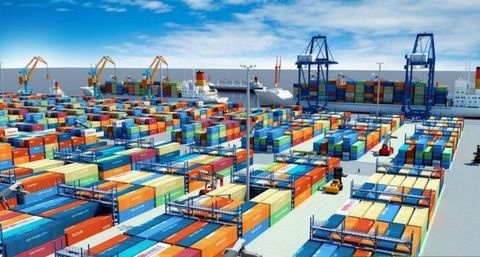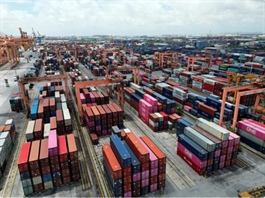Việt Nam export recovery gains momentum
Việt Nam export recovery gains momentum
Exports grew smartly in January and their recovery is expected to gain further momentum, supporting the economy and stock market, according to Michael Kokalari, chief economist at investment fund VinaCapital.

Exports grew smartly in January and their recovery is expected to continue gaining momentum in the months ahead. — Photo courtesy of thoibaotaichinhvietnam.vn |
Exports fell for the first time last year since the global financial crisis in 2007-08. But they resumed growth in Q4, and surged 42 per cent year-on-year in January, supported by a 33 per cent jump in shipments of tech products, which account for a third of total exports.
The growth was driven by a nearly 60 per cent increase in computer and electronics exports. Global PC sales plunged by 30 per cent yoy in early 2023 but resumed growth late last year, partly driven by users upgrading to more powerful, AI-capable machines.
Global smartphone sales also returned to growth in late-2023 for the first time in two years, though the rebound has been less pronounced than for computers in the absence of compelling new features prompting users to upgrade.
Việt Nam’s smartphone exports grew 16 per cent in January, driven by the introduction of Samsung’s new S24 smartphone during the month.
Another reason for exports to spike year-on-year was admittedly the fact that last year the Lunar New Year holidays fell in January and so the month had far fewer business days.
But a 42 per cent jump in exports this year was impressive even accounting for the timing of the Tết holidays.
US firms excessively ordered “Made in Vietnam” products during the COVID supply-chain disruptions and then subsequently slashed their purchases last year to reduce their bloated inventories.
However, following the most aggressive pace of inventory destocking in over 10 years, that trend is now ending, and consequently, Việt Nam’s exports revived in January.
For Chinese exporters too, orders improved considerably last month.
“We expect Việt Nam’s export orders to continue increasing in the months ahead due to the surprising strength of the US economy, as evidenced by the highest level of US consumer confidence since the COVID reopening boom.”
Việt Nam’s manufacturing output grew 19.3 per cent in January, which means manufacturers’ inventories of finished products fell last month amid the export boom.
The combination of falling inventories and growing new orders means production needs to increase to meet the increasing demand for Vietnamese products.
With manufacturing accounting for nearly 25 per cent of GDP, faster manufacturing growth would be a big boost to GDP growth.
Nearly 10 per cent of the workforce is employed by foreign companies in relatively high-paying jobs. Factory wage growth is recovering back to 5-7 per cent after bottoming last year.
Consequently, the economy is likely to get a boost from both an increase in manufacturing output and higher consumption this year, supported by an increase in manufacturing employment.
Consumer confidence and domestic consumption, weak in 2023 due to layoffs and troubles in the real estate sector, are coming back.
“While we do not expect a robust increase in consumer spending in the first quarter, we do expect stronger consumer spending and domestic consumption as the year unfolds.”
The resulting broad-based economic recovery (in exports, manufacturing, and consumption) should boost earnings for a range of listed stocks, enabling active managers to outperform the broader stock market.
“We expect the earnings of listed consumer companies to bounce from a 33 per cent decline in 2023 to a 50 per cent surge in 2024 and for listed banks’ earnings growth to jump from 6 per cent to 18 per cent).
He also expected domestic investors to pour more money into equity markets starting in Q1 because bank deposit rates are near all-time lows, valuations are incredibly cheap, and the recovery in the real estate market will take time to gather momentum.
The VN-Index is trading at a 10x P/E for fiscal year 2024, nearly two standard deviations below its five-year mean valuation, and 25 per cent below the valuation of its regional emerging peers.

























